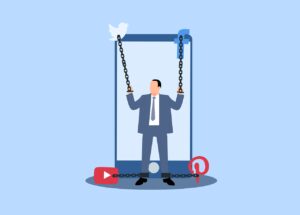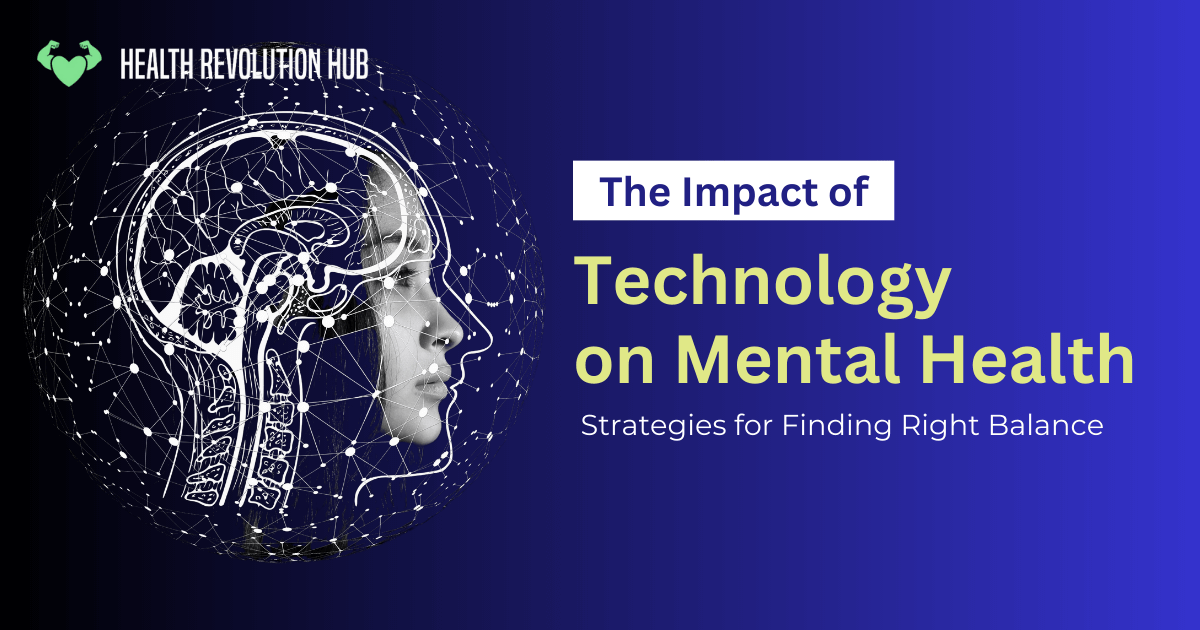Introduction:

In today’s digital era, technology has become an integral part of our lives, transforming the way we communicate, work, and access information. While technological advancements offer numerous benefits, there is growing concern about their impact on mental health. From constant connectivity to digital overload, technology can sometimes contribute to stress, anxiety, and other mental health issues. However, by implementing effective strategies, we can find a healthy balance between technology and our well-being. In this article, we will explore the impact of technology on mental health and provide practical strategies to help you maintain a harmonious relationship with the digital world.
Impact of Technology on Mental Health

The impact of technology on mental health is a complex and multi-faceted issue. While technology has brought about numerous advancements and conveniences in our lives, it has also introduced new challenges and potential risks to our mental well-being. Here are some key impacts to consider:
Increased Screen Time:
The widespread use of smartphones, computers, and other digital devices has led to a significant increase in screen time. Excessive screen time can contribute to physical and mental health issues, including eye strain, poor sleep quality, and sedentary behavior. Prolonged exposure to screens may also negatively affect mood and contribute to feelings of anxiety, depression, and loneliness.
Social Media and Comparison:

Social media platforms have revolutionized how we connect and share information. However, they also present a unique set of challenges. Constant exposure to carefully curated and often idealized portrayals of others’ lives can lead to social comparison and feelings of inadequacy. This can contribute to low self-esteem, anxiety, and even depression, as individuals strive to meet unrealistic standards or constantly seek validation through social media interactions.
Cyberbullying and Online Harassment:
The anonymity and accessibility provided by technology have unfortunately given rise to cyberbullying and online harassment. Victims of such behavior may experience significant psychological distress, including anxiety, depression, and even suicidal thoughts. The constant presence of technology and the ability for negative interactions to extend beyond physical spaces can exacerbate the impact of these harmful experiences.
Digital Overload and Information Overload:
The rapid flow of information and the constant bombardment of notifications, emails, and messages can lead to information overload and a sense of being overwhelmed. This digital overload can contribute to stress, anxiety, and difficulties in focusing and maintaining attention. It may also disrupt work-life balance, as the boundaries between personal and professional life become blurred.
Dependency and Addiction:
Technology can become addictive, leading to dependency and compulsive behavior. Excessive use of technology, such as gaming, social media, or online gambling, can interfere with daily functioning, relationships, and overall well-being. Internet addiction and gaming disorder are recognized conditions that can have severe consequences on mental health.
Impact on Sleep:

The use of technology before bedtime, particularly engaging with screens, can interfere with sleep patterns. The blue light emitted by screens can suppress the production of melatonin, a hormone that regulates sleep. Disrupted sleep can result in fatigue, irritability, and difficulties in concentration, ultimately impacting overall mental health.
It is important to note that the impact of technology on mental health is not universally negative. Technology can also provide access to mental health resources, online therapy, support communities, and educational resources that promote well-being. Additionally, technology innovations like mental health apps, wearable devices, and telemedicine have expanded opportunities for mental health care and self-management.
Strategies for Finding Balance
Recognizing the Impact:
Technology has revolutionized the way we interact with the world, but it’s crucial to acknowledge its potential impact on mental health. Excessive screen time, social media comparison, and constant notifications can lead to feelings of loneliness, depression, and diminished self-esteem. By being aware of these challenges, you can take proactive steps to mitigate their negative effects.
Setting Digital Boundaries:
Establishing boundaries around technology usage is essential for maintaining mental well-being. Start by designating specific periods of the day for uninterrupted tech-free time. Create “device-free” zones in your home or during social activities to foster face-to-face connections. Additionally, consider disabling non-essential notifications to minimize distractions and regain control over your attention.
Cultivating Mindfulness:
Practicing mindfulness can help you develop a healthier relationship with technology. Engage in activities that promote being present in the moment, such as meditation, deep breathing exercises, or mindful walks in nature. By focusing on the present, you can reduce stress and improve overall mental clarity, allowing you to engage with technology more consciously.
Prioritizing Self-Care:

Investing time in self-care is crucial when navigating the impact of technology on mental health. Regular exercise, adequate sleep, and a balanced diet are foundational elements for maintaining well-being. Take breaks from technology to engage in activities that bring you joy and fulfillment, such as hobbies, spending time with loved ones, or pursuing creative outlets.
Cultivating Digital Well-being Habits:
Developing healthy digital habits can significantly impact your mental health. Consider implementing practices such as digital detoxes, where you take dedicated breaks from screens. Explore mindfulness apps or productivity tools that can help manage your technology usage effectively. Creating a technology schedule that incorporates intentional online activities and disconnecting at specific times can foster a healthier relationship with technology.
Nurturing Real-Life Connections:
While technology provides virtual connections, nurturing real-life relationships is essential for our mental well-being. Make an effort to prioritize in-person interactions, plan social outings, or engage in community activities. Genuine human connections can provide emotional support, boost mood, and counterbalance the potential isolation that excessive technology use may bring.
Seeking Professional Support:
If you find that technology is significantly impacting your mental health or struggling to find balance, seeking professional support is a valuable step. Mental health professionals can provide guidance and strategies tailored to your specific needs, helping you navigate the challenges of our technology-driven world.
Conclusion:
Technology undoubtedly offers numerous advantages, but it’s important to approach it mindfully to protect our mental health. By recognizing the impact, setting boundaries, prioritizing self-care, and nurturing real-life connections, we can find balance and harness the benefits of technology while safeguarding our well-being. Remember, it’s within our control to cultivate a harmonious relationship with technology and create a positive digital experience that supports our mental health.








